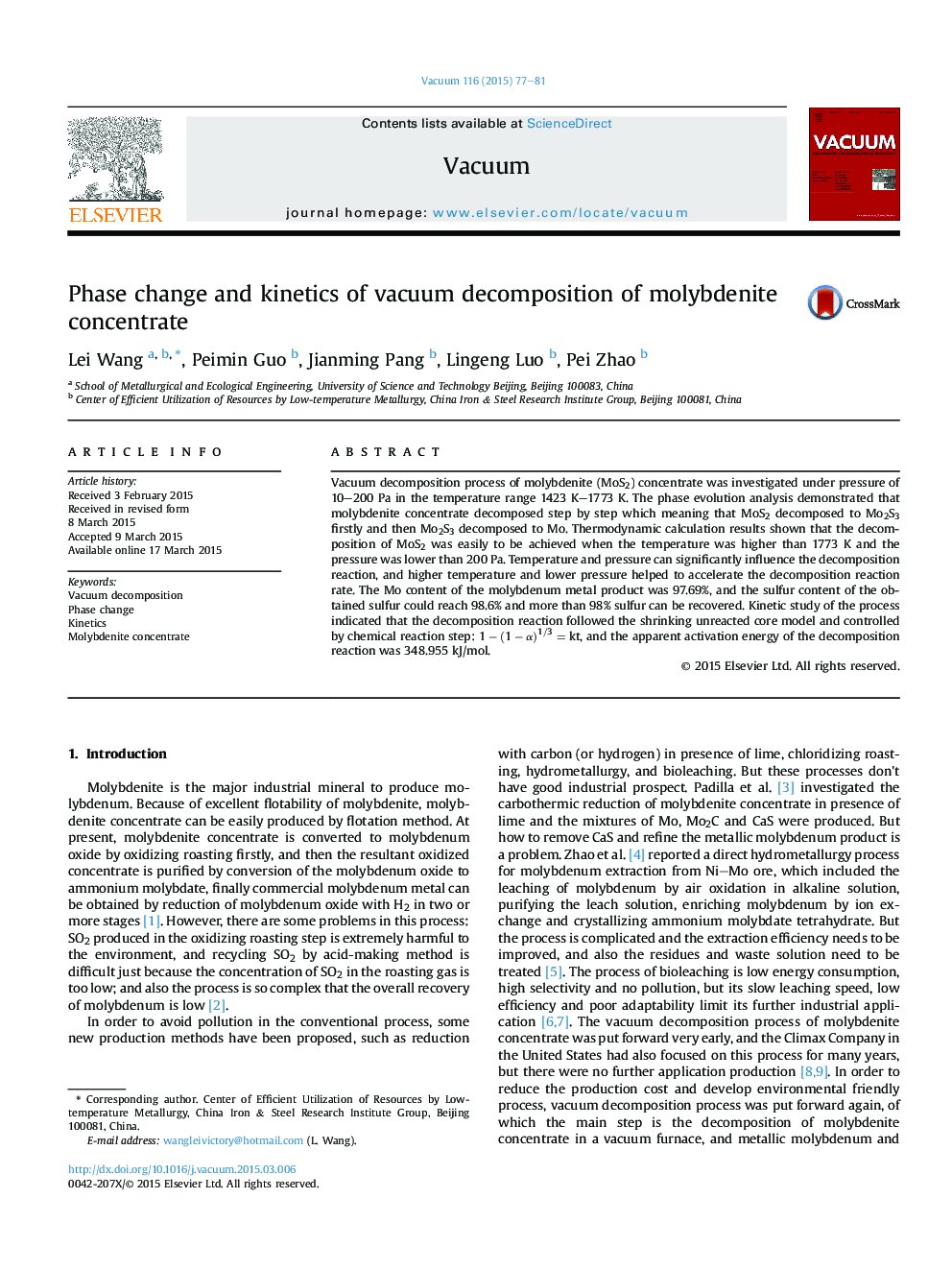| کد مقاله | کد نشریه | سال انتشار | مقاله انگلیسی | نسخه تمام متن |
|---|---|---|---|---|
| 1690419 | 1518953 | 2015 | 5 صفحه PDF | دانلود رایگان |
• Decomposition of molybdenite concentrate can be achieved under low pressure.
• MoS2 decomposed to Mo2S3 firstly and then Mo2S3 decomposed to Mo.
• The pressure, temperature and time were the main impact factors of the reaction.
• The obtained molybdenum product was porous sponge state.
• The decomposition rate followed the shrinking unreacted core model.
Vacuum decomposition process of molybdenite (MoS2) concentrate was investigated under pressure of 10–200 Pa in the temperature range 1423 K–1773 K. The phase evolution analysis demonstrated that molybdenite concentrate decomposed step by step which meaning that MoS2 decomposed to Mo2S3 firstly and then Mo2S3 decomposed to Mo. Thermodynamic calculation results shown that the decomposition of MoS2 was easily to be achieved when the temperature was higher than 1773 K and the pressure was lower than 200 Pa. Temperature and pressure can significantly influence the decomposition reaction, and higher temperature and lower pressure helped to accelerate the decomposition reaction rate. The Mo content of the molybdenum metal product was 97.69%, and the sulfur content of the obtained sulfur could reach 98.6% and more than 98% sulfur can be recovered. Kinetic study of the process indicated that the decomposition reaction followed the shrinking unreacted core model and controlled by chemical reaction step: 1−(1−α)1/3=kt1−(1−α)1/3=kt, and the apparent activation energy of the decomposition reaction was 348.955 kJ/mol.
Journal: Vacuum - Volume 116, June 2015, Pages 77–81
